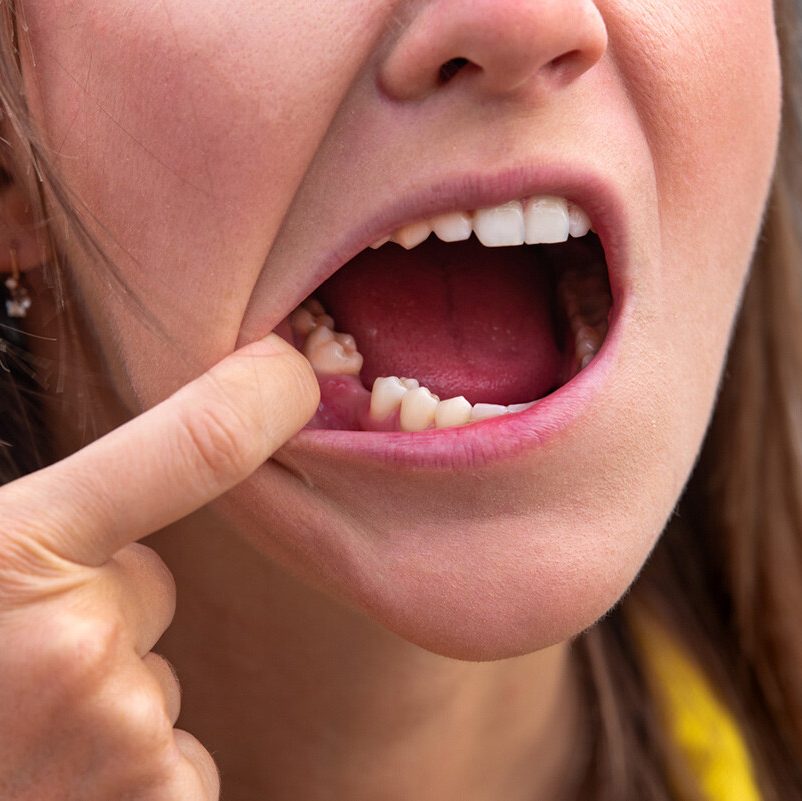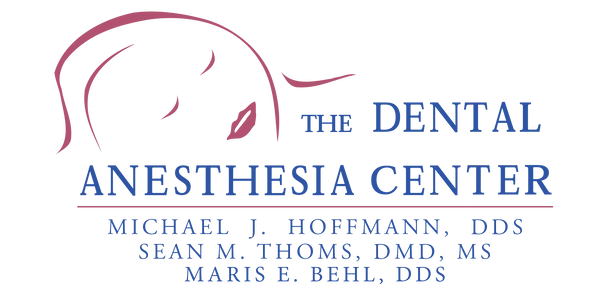Bleeding while brushing isn’t normal. It’s often an early sign of gum disease—your body’s warning that your gums need professional dental care.
You’re brushing your teeth, and you notice blood in the sink. It’s a little unsettling, but you might shrug it off and assume it’s normal. After all, your gums don’t hurt… so what’s the harm?
At The Dental Anesthesia Center in St. Louis, we specialize in sedation dentistry and early intervention for gum disease, especially for patients who may have avoided dental care due to fear, anxiety, or special needs.

Why Do My Gums Bleed When I Brush?
Bleeding gums are usually a symptom, not a condition. They’re often a sign of gum inflammation, also known as gingivitis, the earliest stage of gum disease (periodontal disease).
Common Causes Include:
- Poor brushing or flossing habits
- (Not brushing long enough or skipping flossing allows plaque to build up.)
- Brushing too hard
- (Using a hard-bristled brush or scrubbing aggressively can irritate gums.)
- Gum disease (gingivitis or periodontitis)
- (Plaque buildup causes the gums to become swollen, red, and bleed easily.)
- Hormonal changes
- (Pregnancy, menopause, or puberty can increase gum sensitivity.)
- Vitamin deficiencies
- (Especially Vitamin C and Vitamin K.)
- Tobacco use
- (Weakens gum tissue and masks inflammation symptoms.)
- Medications
- (Blood thinners or certain antihypertensives can contribute to bleeding.)
What Is Gum Disease, Really?
Gum disease is a progressive infection of the tissues supporting teeth. It starts with gingivitis and, if untreated, can evolve into periodontitis.
Progression of Gum Disease:
- Gingivitis: Gums are red, puffy, and bleed easily. Reversible with proper care.
- Early Periodontitis: Gums start to pull away from teeth; mild bone loss may occur.
- Moderate to Advanced Periodontitis: Deep pockets form, teeth may loosen, and infection can spread to the bone.
Untreated gum disease is the leading cause of tooth loss in adults.
When Bleeding Gums Signal a Bigger Health Issue
Did you know your mouth can be a window into your overall health?
Chronic gum inflammation is linked to several systemic conditions, including:
- Heart disease
- Diabetes
- Respiratory infections
- Pregnancy complications (preterm birth, low birth weight)
Your gums might be bleeding, but the underlying issue could be more widespread than you think.

How to Stop Bleeding Gums: Treatment & Prevention
1. Improve Your Oral Hygiene Routine
- Brush twice daily for two minutes with a soft-bristled brush.
- Floss at least once daily, even if your gums bleed at first.
- Use antibacterial mouthwash to reduce plaque.
2. Schedule a Professional Dental Cleaning
- A deep cleaning can remove tartar (hardened plaque) that brushing can’t reach.
- Your hygienist can also assess your gum health and teach you proper techniques.
3. Consider Periodontal Treatment
If gum disease has progressed, we may recommend:
- Scaling and root planing (deep gum cleaning)
- Antibacterial therapy
- Gum surgery for advanced cases
4. Fear of the Dentist? We Can Help.
Many patients delay care due to dental anxiety. At The Dental Anesthesia Center, we offer:
- Sedation options for mild to severe fear
- General anesthesia for patients with special needs or complex treatment needs
- Non-judgmental care focused on making you feel safe and supported
My Gums Bleed Sometimes—Should I Be Worried?
Occasional, minor bleeding can happen if you’ve just started flossing again or brushed a little too hard. But frequent or unexplained bleeding should never be ignored. It’s often the first sign of something deeper, and earlier intervention makes treatment faster, easier, and more effective.
Don’t Let Bleeding Gums Turn Into Tooth Loss
Bleeding gums are your mouth’s way of asking for help. Let’s stop the progression before it becomes something bigger.
Located in St. Louis, The Dental Anesthesia Center offers comprehensive care for gum disease with sedation options for patients who need extra comfort or support.
Call us today at (314) 862-7844 or contact us online to schedule a gentle exam and personalized treatment plan.

